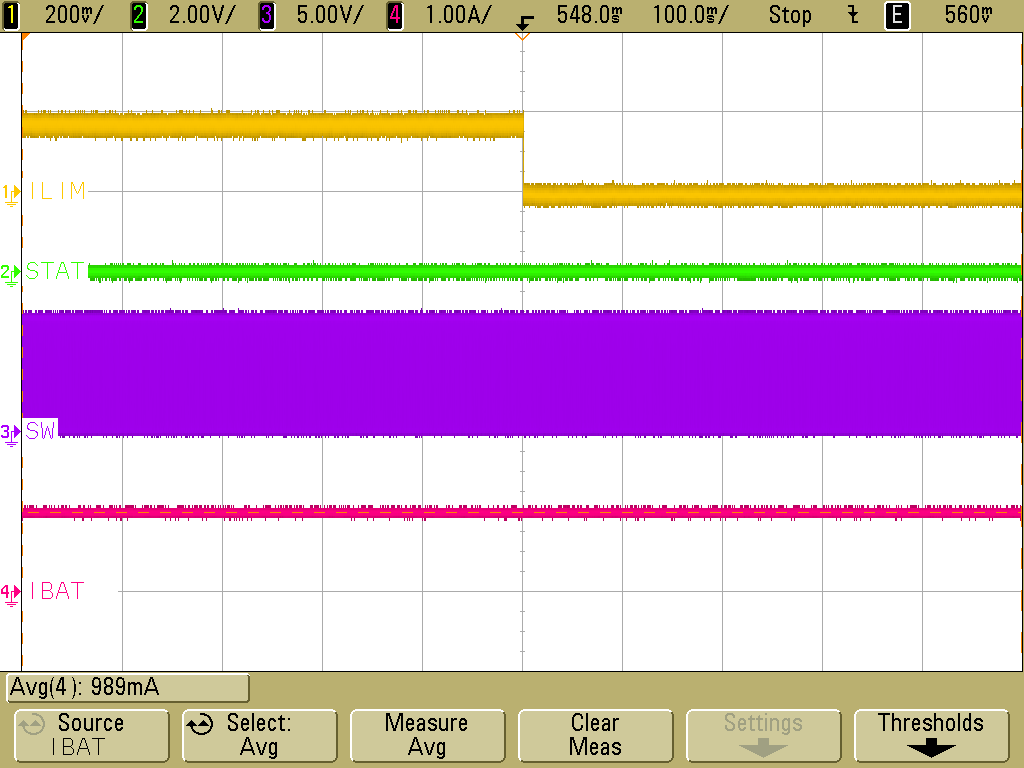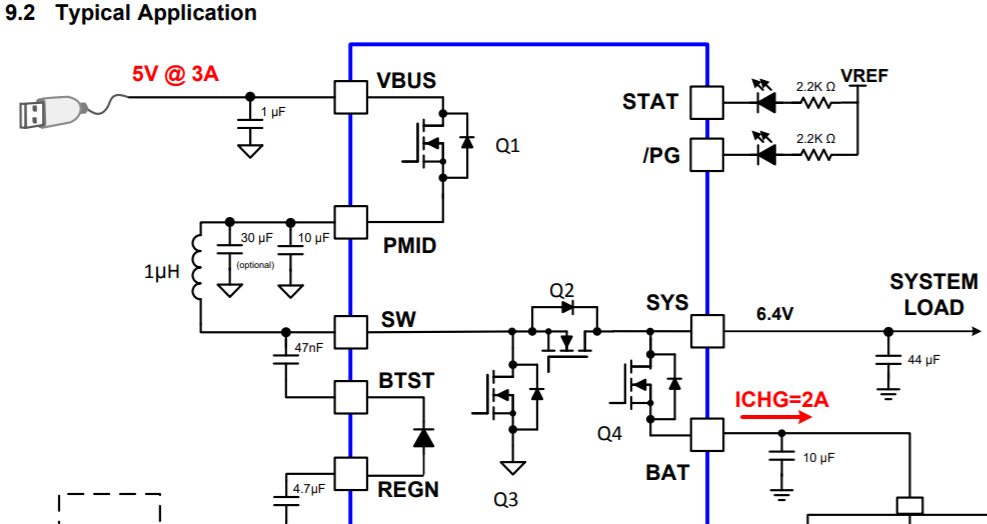I had some trouble.When I connected the ILIM pin to GND, the module entered the wrong mode. STAT started flickering at 1Hz. How to deal with this situation? Or can we only change modules?
Another question is, what is the battery's full state? Is STAT higher than the 8.4V set?







